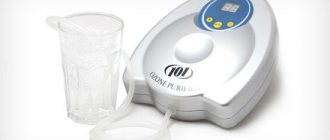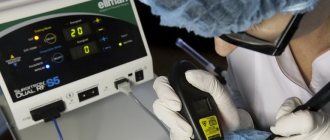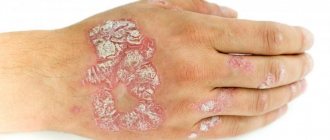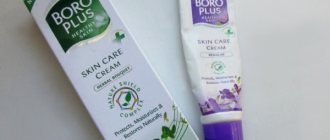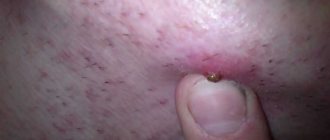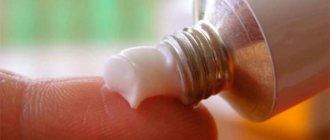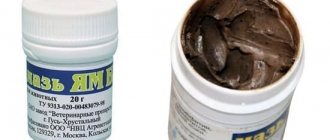Types of phototherapy for psoriasis
To treat psoriasis, lamps of different spectrums of exposure are used.
Ultraviolet 311 nm
Lamp for the treatment of psoriasis
This treatment method uses a lamp with a wavelength of 311 nm. Scientists have found that it is this range that treats psoriasis. The spots shine from several minutes to half an hour in one session. Sessions should be done every other day strictly according to the instructions for the device.
Suitable for the following types of psoriasis:
- seborrheic;
- vulgar (ordinary) - damage to 20% of the body;
- psoriasis of the palms and soles;
- psoriasis on the head.
Can be used by pregnant and nursing mothers, children from 3 years of age.
The result of this method is visible after 2-3 weeks , and complete remission after 2-3 months of treatment according to the instructions. According to the results of a study by the Ministry of Health, the effect of treatment is in 97% of cases.
The 311 nm method is suitable for treatment in clinics and at home.
Selective phototherapy of psoriasis
This method uses a combination of different ultraviolet waves - mid-wave (295-330 nm) and long-wave radiation (350-400 nm). Doses are increased gradually, and sessions are carried out 5 times a week. Full course of selective phototherapy: 20-30 sessions.
Suitable for patients with the following forms of psoriasis:
- vulgar (ordinary) psoriasis;
- exudative psoriasis;
- rashes are moderate, can be used in advanced stages of the disease.
The result of such treatment reaches 85-90%. There are no side effects as there is no need to take medications.
Treatment is carried out only in the clinic .
PUVA therapy (photochemotherapy)
PUVA therapy cabin
The principle of action of PUVA therapy is the interaction of the drug and ultraviolet rays.
First, the patient is given a medicine that increases sensitivity to ultraviolet radiation. After 1.5-2 hours, the spots are irradiated with ultraviolet light with a wavelength of 340-400 nm (peak activity at 365 nm).
The method is suitable:
- for all forms of psoriasis;
- skin lesions on more than 20% of the body.
Cannot be used by pregnant women, during breastfeeding, or children under 12 years of age.
The result of the method is 85-95%. There are positive reviews from the forums. However, in addition to the result, (from nausea to skin cancer) caused by medications are common
Treatment is carried out only in the clinic. At home, it is impossible to accurately calculate the dosage of the drug and ultraviolet irradiation.
Excimer laser
308 nm laser
The principle of operation of this method is a local effect on psoriatic plaques (wavelength 308 nm). The laser irradiates a small surface of the skin; the area of the laser nozzle is only 3x3 cm.
Laser irradiation sessions are carried out 2-3 times a week. The total number of sessions is 4-15 to achieve the effect.
Suitable mainly for patients with a limited lesion surface. That is, when psoriasis spreads to no more than 10% of the body or in single plaques. Applicable for:
- palmar-plantar psoriasis;
- exudative psoriasis;
- vulgar psoriasis;
- psoriatic erythroderma.
Not suitable for scalp psoriasis (seborrheic).
The best result for palmoplantar psoriasis: out of 35 patients, remission occurred in 28. In general, the method is effective and has no side effects.
The excimer laser is used only in clinics ; it is expensive and still rare equipment. This device must be used by a specially trained, qualified healthcare professional.
Contraindications to UV treatment
Before starting therapeutic UV treatment, it is recommended to conduct a number of diagnostic examinations for possible contraindications, which most often include:
- disease with systemic lupus erythematosus;
- the presence of porphyria (genetic diseases with a high content of natural pigments produced by porphins);
- Gorlin syndrome (pathological process of autosomal dominant genetic type);
- manifestations of dermatomyositis;
- increased sensitivity to ultraviolet radiation;
- malignant neoplasms and some benign tumors with a probability of degeneration into cancer;
- Treatment with psoralens and UV rays is prohibited during pregnancy and lactation;
- Exposure to ultraviolet rays is not recommended for patients with dysfunctional liver and kidney disorders.
In addition, taking medications with arsenic, as well as some ophthalmological diseases (cataracts, damage to the lens of the eye), are contraindications.
Phototherapy for psoriasis: reviews
Review from user Victor K about phototherapy
PAS user review of phototherapy
Review from user Murlyshka about phototherapy
Review from user Murlyshka about phototherapy
Mechanisms of lamp action
So, what are the mechanisms of action of ultraviolet lamp (UV) in the treatment of psoriasis?
- Nervous-reflex. Ultraviolet irritates receptors on the skin, sending impulses to the central nervous system, and then to other organs in the body.
- Physico-chemical. The energy generated by the device is converted into heat, which can positively influence the metabolic rate in the body, which leads to better nutrition of cellular structures, and therefore restoration of damaged epithelium.
- Photoelectric. Ultraviolet light can increase the permeability of membranes between cells.
- Pigmentation. The rays of the lamp cause the skin to produce a protective dark pigment, which affects the body's ability to reflect the negative effects of the environment.
conclusions
Phototherapy for psoriasis has been used since ancient times. With the advent of technology, sunlight was replaced by artificial ultraviolet light.
There are 4 types of phototherapy used to treat psoriasis:
- Ultraviolet 311 nm. The 311 nm method is convenient for home treatment and is used in clinics. Gives results after 2-3 weeks of use, has no side effects.
- Selective phototherapy. The method is used in clinics and produces results (in 85-90% of cases). Has no side effects, best suited for exudative psoriasis and psoriasis with local skin lesions.
- PUVA therapy. This method is used only in clinics. Result in 85-95% of cases, many side effects. Best suited for patients with psoriasis covering 20% of the body or more.
- Laser 308 nm. Due to the high cost of the equipment, it is not widely used and is used only in clinics. It gives results if psoriatic rashes on the body are single and small in area (the area of the laser nozzle is 3 by 3 cm). No side effects.
Based on the results of a comparison of the availability and effectiveness of the method, the 311 nm ultraviolet treatment method is in first place. It is used both in the clinic and for home treatment.
be careful
People suffering from psoriasis often make one big mistake:
Roughly speaking, even if it is possible to remove the signs of psoriasis from the outside and put the skin in order, inside the body the disease continues to devour the autoimmune system, which provokes severe diseases, many of which are fatal. Particularly scary is the fact that psoriasis can provoke cancerous tumors.
The only remedy that is currently available for independent use by patients with psoriasis is the special product PSORIDEL, which is up to
issued at a discounted price -
1 ruble
. Read the details in the official source.
The best remedies for Psoriasis
Add to cart
Antipsoriasis cream 990 rub.
Add to cart
Magnipsor ointment RUB 1,490
Add to cart
Ultraviolet lamp Dermalight ® RUB 14,900.
Preparation and progress of the procedure
Before using ultraviolet radiation, the patient is prescribed a series of laboratory (general blood count, urine, blood biochemistry) and instrumental (ultrasound of the kidneys, liver, etc.) examinations. This is necessary to identify pathologies for which such treatment is prohibited.
- The patient takes a comfortable position on the couch and is asked to sit quietly for about 5-10 minutes to calm and relax.
- The irradiated skin must be clean. The entire body or its parts are exposed in turn, depending on the affected area.
- If necessary, the patient undresses and protects his eyes with special glasses.
- For local irradiation at an erythemal (minimum) dose, the area of exposure is limited with a sheet, and the area itself is covered with a napkin.
- Install the irradiator at a given distance and secure the reflector in the desired position.
- Remove the napkin from the irradiated surface and note the start time of the procedure.
- At the end of the treatment, the reflector of the irradiator is moved aside, the sheet is removed from the body and the patient is asked to get up and get dressed.
- The patient rests for 15-20 minutes after the procedure.
Progress of the procedure for UVOC:
- a hollow tourniquet is inserted into the patient’s vein;
- the blood moves through the tube into a cuvette, a special vessel located in a multi-wave irradiator device;
- in it, the blood is exposed to ultraviolet radiation and then returned back into the bloodstream.
UFOK is carried out in a sterile room for 60 minutes. The course of treatment is 7-8 sessions.
Progress of the comb procedure:
- the first session lasts 30 seconds;
- in the absence of redness, the procedure is carried out every other day;
- the duration of each subsequent session is extended by 15-30 seconds;
- the device is held in a position that allows the beams to affect large areas of damage;
- To ensure uniform exposure, comb the hair from right to left and vice versa;
- The treatment of the head is completed by combing the hair against its growth.
Attention! Treatment of the parotid areas and the scalp in the frontal area is carried out with a comb without a plastic attachment. The device should be separated by a distance of 2 centimeters from the surface being treated.
Symptoms of the disease
The manifestation of psoriasis is determined by the severity and degree of development of the disease. The main features are expressed in:
- dryness and flaking of the skin;
- the appearance of a pink or bright red rash all over the body;
- pain and itching of the affected areas of the body;
- general weakness;
- depression;
- chronic apathy.
Patients experience the main discomfort when communicating with others, performing hygiene procedures, as well as in professional activities.
Statistics show that about 2% of people on earth face this problem in their lives.
Precautionary measures
The specifics of prescribing ultraviolet radiation for any type of psoriasis are considered by the doctor on a case-by-case basis. When treated with ultraviolet light, the patient's protective layer of skin is depleted, which often leads to the development of benign and malignant formations. When the eyes are exposed to these rays, the retina is damaged and visual acuity deteriorates. In addition, with prolonged exposure to ultraviolet radiation, general weakness of the body is observed and irritability occurs.
To eliminate or at least minimize all these consequences, before the procedure the doctor carefully examines the patient’s body, assesses the severity of the disease and prescribes the required dosage of rays. Be sure to cover the areas of the patient’s body that are most sensitive to ultraviolet radiation: the groin, face, shoulders, and abdomen. In some cases, all areas not affected by psoriasis are hidden. The patient is also given safety glasses.
The use of ultraviolet light remains the most effective method of combating psoriasis. The best results are achieved by a comprehensive combination of ultraviolet irradiation, medications and traditional medicine.
Remember that it is important to monitor the condition of your skin, care for it properly, and if suspicious symptoms appear, immediately consult a doctor. And to always stay up to date with interesting and useful information, be sure to subscribe to our articles and share your favorite publications on social networks with friends. See you again!
Operating principle of irradiators
UV rays affect the upper layers of the epidermis and trigger the body's defense mechanisms. Ultraviolet light works in this way:
- stimulates the immune system,
- affects nerve endings, improving the functioning of internal organs,
- accelerates metabolic processes in the skin,
- has an anti-stress effect, due to which the body more actively produces endorphins.
As a result, inflammation weakens and remission occurs.
Benefits of ultraviolet therapy with UVB rays
Light therapy, in comparison with other methods, has a number of advantages. The main ones include:
- ultraviolet light is quite harmless and is suitable even for children over 5 years old and pregnant women;
- has a minimum of side effects and does not suppress the immune system;
- absence of pain and discomfort;
- therapy gives a fairly long-term remission;
- the ability to combine the procedure with any necessary therapy methods;
- affordable price;
- effective elimination of psoriatic plaques.
